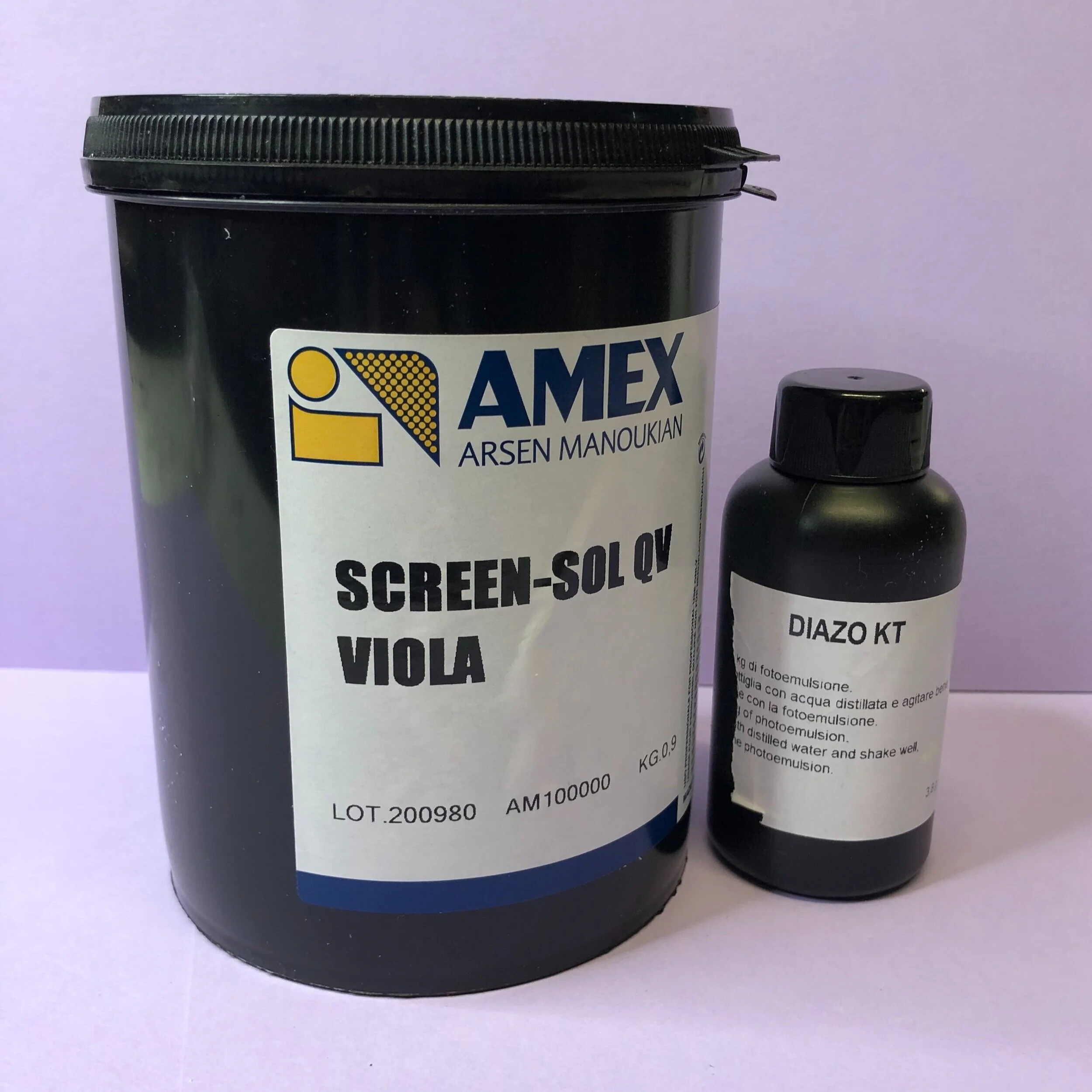How to expose a screen.
Firstly, grab your emulsion.
It’s located in the fridge upstairs.
Carefully pour a generous amount of emulsion into the trough.
The troughs are by the squeegees.
Make sure to keep the studio clean and tidy.
Avoid spilling emulsion as much as possible.
Now you’re ready to coat your screen.
Make sure you’re emulsion is evenly distributed in the trough.
Gently place the trough onto the bottom of the screen. Tip the trough so that the emulsion makes contact with the screen mesh.
Now gently glide the trough up the screen.
You want to apply a thin layer of emulsion to your screen.
If there are any drips, use the trough or a scrap piece of cardboard to scrape it away.
Now that your screen is coated, place it on the drying rack.
Make sure the de-humidifier is on.
Then scrape all of the extra emulsion back into its original tub.
Make sure the lid is on securely.
Now time to clean the trough and spatula.
Leave the screen to dry for approximately an hour or until the emulsion is fully dry.
Once your screen is fully dry, now it’s time to expose.
Grab your printed artwork and place it onto the exposure unit.
Position your design to desired arrangement for your screen.
Grab your screen and carefully place it on top of the exposure unit.
Add metal sheets over where the design is on the screen. And add weights accordingly.
This will ensure an even exposure.
Turn on the exposure unit and time for 2 minutes and 40 seconds.
This is the usual time to expose a screen. You can expose for less time but be wary of the design washing out.
Do not look directly into the light of the exposure unit as it may damage your eyes.
Once exposed, take your screen into the wash booth.
Clean both sides of the screen and wash out the emulsion so you are left with the stencil of your artwork.
If there any stubborn bits of your design that aren’t washing out.
Use your finger to rub over the area that is still blocked in.
This should help with pushing the emulsion out and creating a crisp design.
To ensure the design won’t be damaged.
Expose again to harden the emulsion.
Once your screen is fully dried.
You are ready to print!















